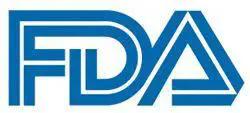News
Article
FDA Approves Tepotinib for Metastatic NSCLC Harboring MET Exon 14 Skipping Alterations
Author(s):
The FDA has granted approval to tepotinib (Tepmetko) for adult patients with metastatic non–small cell lung cancer harboring MET exon 14 skipping alterations.
FDA

The FDA has granted regular approval to tepotinib (Tepmetko) for the treatment of adult patients with metastatic non–small cell lung cancer (NSCLC) harboring MET exon 14 skipping alterations.1
In February 2021, the regulatory agency granted accelerated approval to the MET inhibitor for this indication based on findings from the phase 2 VISION trial (NCT02864992).2 Tepotinib induced an objective response rate (ORR) of 43% (95% CI, 32%-56%) in 69 treatment-naive patients per blinded independent review committee (BIRC) and RECIST v1.1 criteria.3 The median duration of response (DOR) was 10.8 months (95% CI, 6.9-not estimable). In 83 previously treated patients, the ORR was also 43% (95% CI, 33%-55%) with a median DOR of 11.1 months (95% CI, 9.5-18.5).
The decision to convert the accelerated approval to a traditional approval was based on data from an additional 161 patients with 28 months of added follow-up time for DOR.1
Findings indicated that in evaluable treatment-naive patients (n = 164), tepotinib elicited an objective response rate (ORR) of 57% (95% CI, 49%-65%). Forty percent of responders continued to respond for 12 months or longer. In evaluable previously treated patients (n = 149), the ORR achieved with the agent was 45% (95% CI, 37%-53%), with 36% of responders experiencing a DOR of at least 12 months.
About VISION
The single-arm, open-label, multicenter, non-randomized, multicohort study enrolled patients with advanced or metastatic NSCLC harboring MET exon 14 skipping alterations who were negative for EGFR wild-type disease and ALK aberrations. Patients needed to have at least 1 measurable lesion by RECIST v1.1 criteria and an ECOG performance status of 0 or 1.
Patients were excluded if they had symptomatic central nervous system (CNS) metastases, significant uncontrolled cardiac disease, or if they received prior MET or HGF inhibitors.
Study participants were given 450 mg of tepotinib once daily until disease progression or intolerable toxicity.
The trial's primary efficacy end point was ORR by RECIST v1.1 criteria as assessed by a BICR. DOR by BIRC served as another key efficacy end point.
The efficacy population was comprised of 69 treatment-naive patients and 83 previously treated patients. The median patient age was 73 years (range, 41-96). Just under half of patients were female (48%) and most patients were White (71%). In terms of ECOG performance status, 27% had a status of 0, and 73% had a status of 1. Forty-three percent of patients were never smokers. The majority of patients had metastatic disease (98%) and adenocarcinoma (86%). Ten percent of patients had CNS metastases. The majority of those who received prior treatment received platinum-based chemotherapy (89%).
Safety
In 255 patients with metastatic NSCLC harboring MET exon 14 skipping mutations who received the agent in VISION, 45% experienced serious adverse reactions. Three patients experienced fatal adverse reactions in the form of pneumonitis, hepatic failure, and dyspnea from fluid overload. Moreover, 44% and 30% of patients required dose interruptions or reductions, respectively, due to an adverse effect (AE). Twenty percent of patients discontinued treatment because of toxicity.
The most common AEs experienced in at least 10% of patients included edema (all grades, 70%; grades 3 to 4, 9%), fatigue (27%; 1.6%), nausea (27%; 0.8%), diarrhea (26%; 0.4%), abdominal pain (16%; 0.8%), constipation (16%; 0%), vomiting (13%; 1.2%), musculoskeletal pain (24%; 2.4%), dyspnea (20%; 2%), cough (15%; 0.4%), pleural effusion (13%; 5%), reduced appetite (16%; 1.2%), and pneumonia (11%; 3.9%).
The most common laboratory abnormalities experienced by 20% or more that worsened from baseline in patients who received the agent in the trial were decreased albumin (grades 1 to 4, 76%; grades 3 to 4, 9%), decreased sodium (31%; 8%), decreased lymphocytes (48%; 11%), decreased hemoglobin (27%; 2%), and decreased leukocytes (23%; 0.8%).
Additional common laboratory abnormalities included increased creatinine (grades 1 to 4, 55%; grades 3 to 4, 0.4%), increased alkaline phosphatase (50%; 1.6%), increased alanine aminotransferase (44%; 4.1%), increased aspartate aminotransferase (35%; 2.5%), increased potassium (25%; 1.6%), increased gamma-glutamyltransferase (24%; 5%), and increased amylase (23%; 4.6%).
References
- FDA approves tepotinib for metastatic non-small cell lung cancer. FDA. February 15, 2024. Accessed February 15, 2024. https://www.fda.gov/drugs/resources-information-approved-drugs/fda-approves-tepotinib-metastatic-non-small-cell-lung-cancer
- FDA grants accelerated approval to tepotinib for metastatic non-small cell lung cancer. News release. FDA. February 3, 2021. Accessed February 15, 2024. https://www.fda.gov/drugs/resources-information-approved-drugs/fda-grants-accelerated-approval-tepotinib-metastatic-non-small-cell-lung-cancer
- Tepmetko. Prescribing information. EMD Serono; 2024. Accessed February 15, 2024. https://www.accessdata.fda.gov/drugsatfda_docs/label/2023/214096s001s002lbl.pdf







